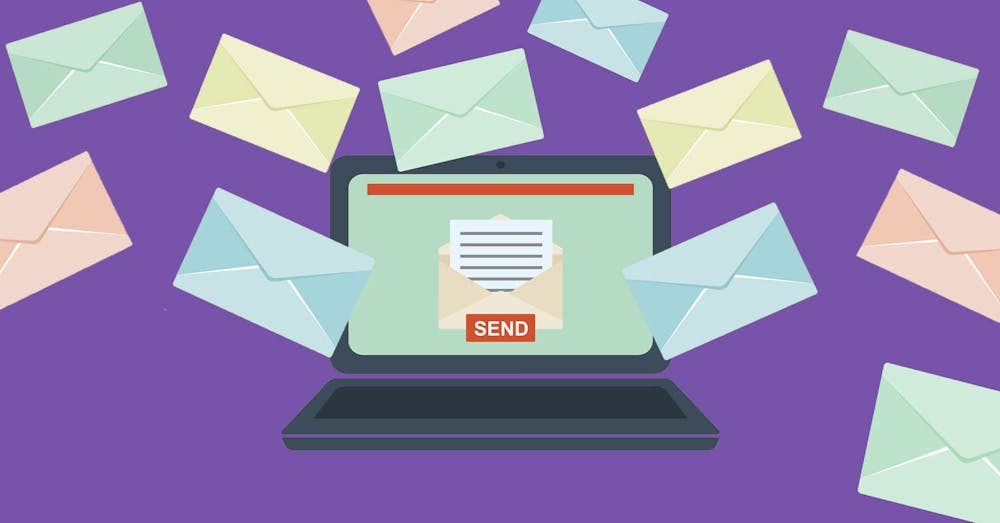- 11 minute read
- Digital Marketing
- Email Marketing
- Social Media
Enhance Your Marketing Strategy With Personalized Content
Intermediate,
Advanced
Get a behind-the-scenes-look into FareHarbor's 2024 season

The only way to make sure your email marketing strategy is working for you is to look at the numbers, but it can be a bit overwhelming when you’re faced with a lot of data and aren’t sure what everything means and what you should focus on. However, by understanding a few definitions and how the metrics are calculated, you can improve your email marketing strategy and help your emails perform better.
Email marketing metrics go beyond the number of subscribers you have; it’s important to dive into how many people are opening your emails, taking action, converting, and unsubscribing. This guide will cover some of the most important email marketing benchmarks, how they’re measured, and why they matter. You’ll be tracking your metrics like a pro in no time!
The first thing you need to know about your marketing emails is how many subscribers are actually opening them. Open rate refers to the percentage of your subscribers who open your marketing emails. This is arguably the most important metric when it comes to email marketing. None of the work you put into your emails will matter if your subscribers don’t open them.
The open rate is calculated through the formula: [number of emails opened] ÷ ([number of emails sent] – [number of bounced emails]) = [open rate]%
 For example, say you send out an email to 500 people who have subscribed to learn more about your walking tour. If 120 people open the email and 10 emails bounced, your open rate would be just about 25% (this is a high number, for illustration purposes).
For example, say you send out an email to 500 people who have subscribed to learn more about your walking tour. If 120 people open the email and 10 emails bounced, your open rate would be just about 25% (this is a high number, for illustration purposes).
A low open rate could mean that you need to improve your subject lines or delivery times. The best way to figure out what works best for your customers is to A/B test these elements. For example, if your welcome email with the subject “Welcome to [company name]” has a low open rate, it might be time to try a new subject line, like “Thanks for joining! Here’s 15% off.”
Another factor that could affect your open rate is poor audience segmentation. Make sure you’re sending relevant emails to your customers based on where they are in their customer journey or what their interests are.
Wondering where you stand? The average open rate for the travel, hospitality, and leisure industry is 16.62% (Campaign Monitor).
 Depending on the purpose of your email, you probably want your subscribers to click on the links contained within the email to take further action. For example, if you’re sending an email about a limited-time holiday discount on your tours or activities, you want them to click through to your website and make a booking within a certain time frame. Click-through rate refers to the percentage of people who clicked on your email’s button or call to action.
Depending on the purpose of your email, you probably want your subscribers to click on the links contained within the email to take further action. For example, if you’re sending an email about a limited-time holiday discount on your tours or activities, you want them to click through to your website and make a booking within a certain time frame. Click-through rate refers to the percentage of people who clicked on your email’s button or call to action.
Click-through rate is calculated through the formula: [number of clicks] ÷ [number of emails delivered] x 100 = [click-through rate]%
When you’re looking at your email metrics, you’ll see click-through rate and unique click-through rate measured separately. Unique CTR refers to the number of individuals who clicked, while CTR takes into account all clicks (including if the same person clicked more than once).
This is an important metric to know because it tells you how effective your copy, CTA, and email layout are. Especially when your email’s goal is to drive conversions (which we’ll talk about next), you need to know if its elements are driving your subscribers to take the desired action.
In the travel, hospitality, and leisure industry, the average click-through rate is 2.14% (Campaign Monitor).
 Conversion rate refers to the percentage of people who complete the goal of your marketing campaign, such as booking a tour or signing up for a special event. This term applies to many types of marketing campaigns, but for email marketing specifically, it refers to the percentage of your email subscribers who clicked the link in your email and followed through with the action you wanted them to take.
Conversion rate refers to the percentage of people who complete the goal of your marketing campaign, such as booking a tour or signing up for a special event. This term applies to many types of marketing campaigns, but for email marketing specifically, it refers to the percentage of your email subscribers who clicked the link in your email and followed through with the action you wanted them to take.
The conversion rate is calculated through the formula: [number of people who completed the action] ÷ [number of emails delivered] x 100 = [conversion rate]%
This is an extremely important metric because it tells you how effective your email campaigns are. By understanding how your emails are performing, you can improve them for conversions through A/B testing your CTAs or copy, introducing limited time offers, personalizing content, and other marketing tactics.
Most email marketing platforms automatically calculate email data for you, but the conversion rate is not always included because the email platform won’t necessarily have access to your booking data, so you might have to plug the formula into a spreadsheet to calculate it. For the same reason, there aren’t clear statistics on average conversion rates for email marketing, but the average landing page conversion rate for the travel industry is around 3% (GetResponse).
 You’ve probably heard the term bounce rate in terms of how many people leave your website without exploring any pages other than the one they landed on. Within email marketing, the bounce rate refers to the percentage of emails that weren’t delivered. There are two types of bounce rate:
You’ve probably heard the term bounce rate in terms of how many people leave your website without exploring any pages other than the one they landed on. Within email marketing, the bounce rate refers to the percentage of emails that weren’t delivered. There are two types of bounce rate:
Bounce rate is calculated using the formula: [number of bounced emails] ÷ [number of emails sent] x 100 = [bounce rate]%
Every company will have some bounce rate for their emails due to human error, subscribers whose emails are deactivated, and a variety of other reasons. Knowing this metric can help you calculate other metrics. For example, as you saw in the open rate formula, you need to subtract the bounced emails to get an accurate open rate. If your soft bounce rate is too high, it could mean that your emails are too big, so you might consider simplifying them or reducing the size of images.
The average bounce rate for the travel, hospitality, and leisure industry is 0.93% (Campaign Monitor), which is on par with other industries.
Unsubscribe rate refers to the percentage of your subscribers who opted out of your emails. They could be opting out for a variety of reasons — they don’t think your emails are relevant to them, they’re decluttering their inboxes, or they feel like they receive too many communications from you.
Unsubscribe rate is calculated through the formula: [number of unsubscribes] ÷ [number of emails delivered] x 100 = [unsubscribe rate]%
 When analyzing your unsubscribe rate, it’s most important to consider whether it’s increasing or decreasing, and if it’s the former, try to diagnose what could be leading to a drop in subscribers.
When analyzing your unsubscribe rate, it’s most important to consider whether it’s increasing or decreasing, and if it’s the former, try to diagnose what could be leading to a drop in subscribers.
Of course, you will always have some unsubscribers, but this doesn’t mean you need to panic. It’s natural to lose a couple of people with each email. But if your unsubscribe rate begins to climb, it could mean you need to rethink the frequency of your emails or the segmentation of your audience.
The average unsubscribe rate for the travel, hospitality, and leisure industry is 0.16% (Campaign Monitor).
 Now that you understand the definitions of these metrics and how they’re calculated, you can take charge of your email marketing strategy. Review your email data each month with confidence, knowing that you can interpret it and improve upon your emails to make sure they’re bringing value to your company. For more marketing tips and trips, explore our digital marketing guides.
Now that you understand the definitions of these metrics and how they’re calculated, you can take charge of your email marketing strategy. Review your email data each month with confidence, knowing that you can interpret it and improve upon your emails to make sure they’re bringing value to your company. For more marketing tips and trips, explore our digital marketing guides.